Seagate EXOS Mach.2 HDD – Should You Buy It?
Seagate revealed the dual actuator EXOS Mach.2 series of HDDs way back in 2019 at CES, promising that this new kind of HDD for enterprise could smash the current performance benchmarks set by optical HDDs. Fast forward to 2023 and they have been hard at work not only proving that it is possible, but further refining and improving upon it. Now Seagate EXOS Mach.2 HDDs are available in several capacities, different interfaces and with many of the same performance and durability benefits of the rest of the EXPS data center class media in their portfolio. However, we are still talking about some particularly specialized kind of kit and despite dual actuator technology continuing to get bigger and bolder (as well as WD now throwing their hat in the ring with the HC760 Ultrastar DC drive series), many are wondering if NOW is the time to jump on Seagate Mach.2 Series. So, in today’s article, I am going to give you 4 reasons why they might well deserve your data and 4 reasons why you might want to remain on the fence a while longer!
|
Seagate EXO Mach.2 14/16/18TB HDDs – HARDWARE HIGHLIGHTS
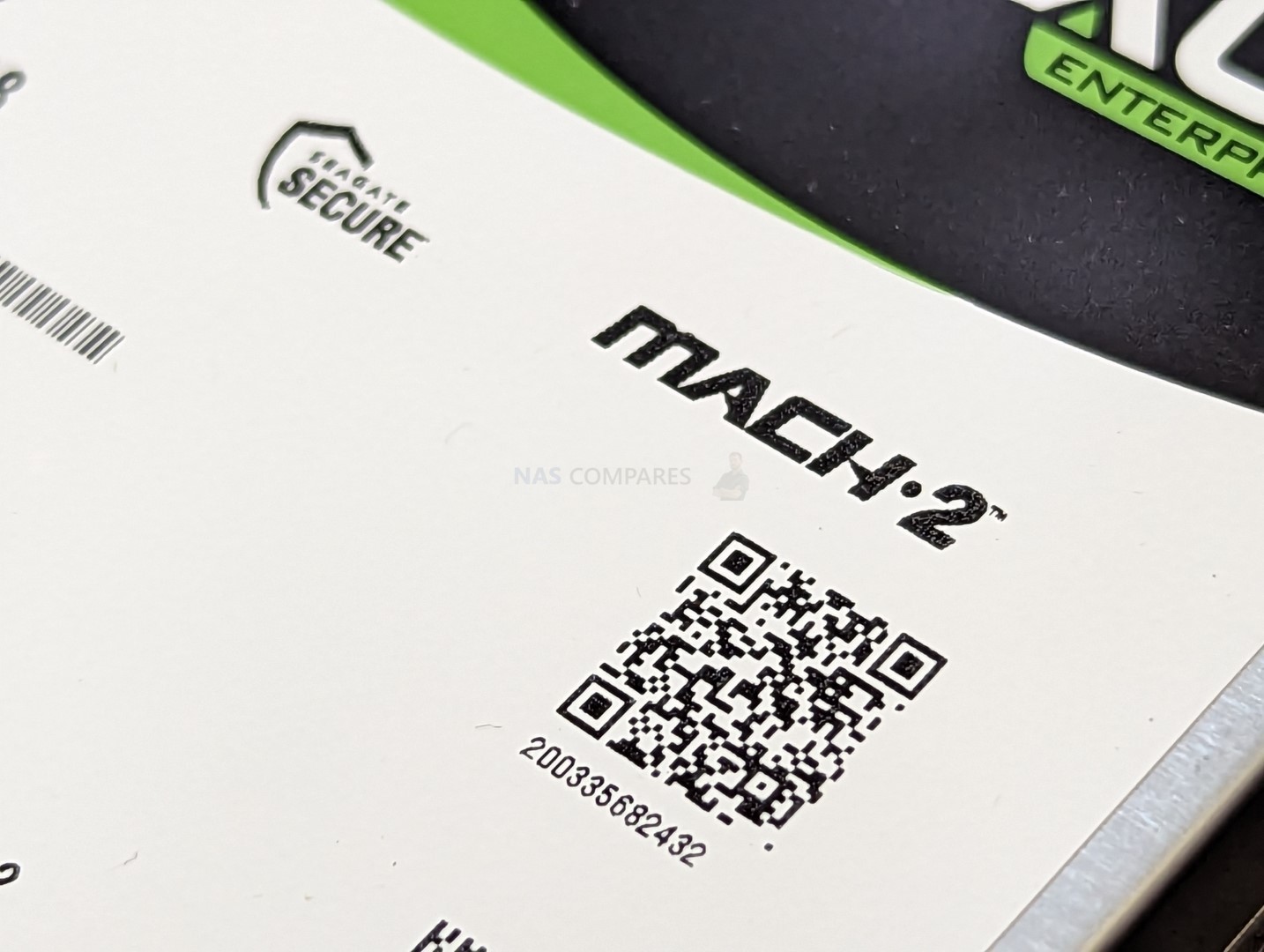
|
4 Reasons the Seagate EXOS Mach.2 HDD is a Good Drive For Your Needs
So, first up, let’s discuss the high points! Here are the four reasons why the Seagate EXOS Mach.2 HDD server media deserves your money and your data! Note – if you are in a hurry, you can watch my ‘Seagate EXOS Mach.2 HDD – Before You Buy’ video below:
#1 – Near FULL SATA Bandwidth Saturation = With a Hard Drive?!
This is possibly the most obvious benefit of the Seagate EXOS Mach.2 HDD series (as it’s their main selling point) but the fact that these new dual actuator HDDs can hit speeds of 540-550MB/s sequential transfer speeds is genuinely astounding! Now, some users might say that SATA performance in the 500MB/s area is not new and that SATA SSDs have been cranking out those kinds of numbers for years – which is indeed true. HOWEVER, SATA SSDs also have a price point and maximum capacity that can easily make them prohibitive outside of the data center! The Seagate EXOS Mach.2 HDD media gives you the best of both worlds, with a performance point that challenges (and surpasses) many SATA SSDs, but is also available in upto 18TB right now with the Seagate EXOS 2X18. This speed is achieved by the drive effectively duplicating the same mechanisms that allow the EXOS single actuator HDDs to hit 280MB/s+, with the inside of the drive technically formed of two sets of actuators and platters running parallel and funnelled out the single interface. It is also worth highlighting that higher performance HDDs beyond the traditional transfer speeds of other HDDs have been around at the data center level for years – but in the much more expensive, lower capacity and more temperamental 10K and 15K RPM drives (eg the WD Velociraptor). The Seagate EXOS Mach.2 HDD series is a significantly more refined and stable alternative to those, which is why WD are in the process of rolling out its own dual actuator HDDs with the Ultrastar HS760 DC Drives later in 2023, as well as both brands discussing three and even four actuator drives down the line theoretically.
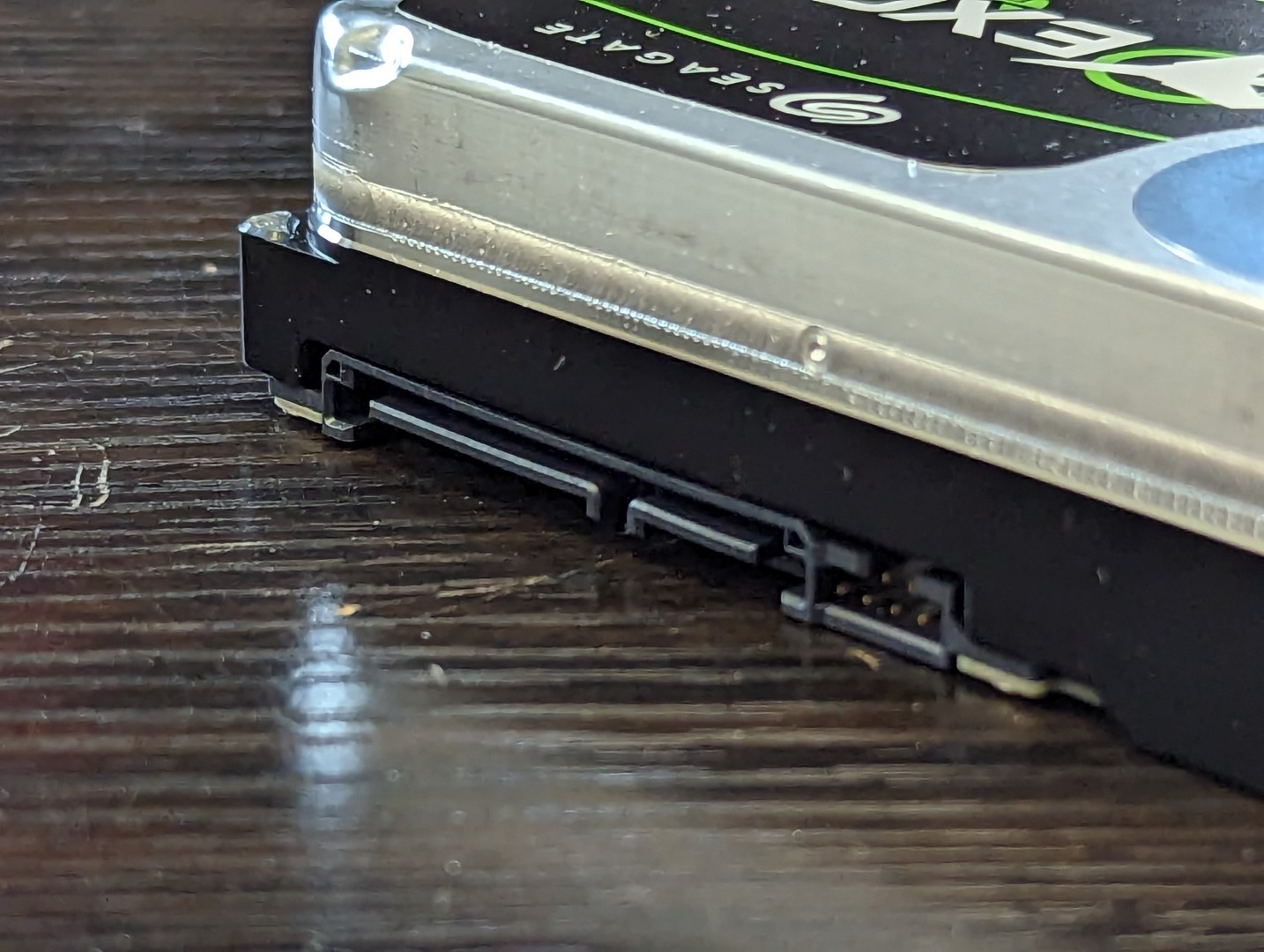
#2 – Available in SAS and SATA!
This was really surprising, given the incredible Data Center focus of these drives, but the Seagate EXOS Mach.2 HDD series is available in both SATA and SAS connectivity. Now, technically SATA 6Gb/s bandwidth is enough for the reported throughput of these drives, so I shouldn’t really be surprised at the Seagate EXOS Mach.2 2X18 being available in more than just SAS (12Gb/s bandwidth). However, with many enterprise systems prioritizing SAS, it’s still refreshing to see them provide these available in SATA too, as it will allow their deployment in more affordable systems.
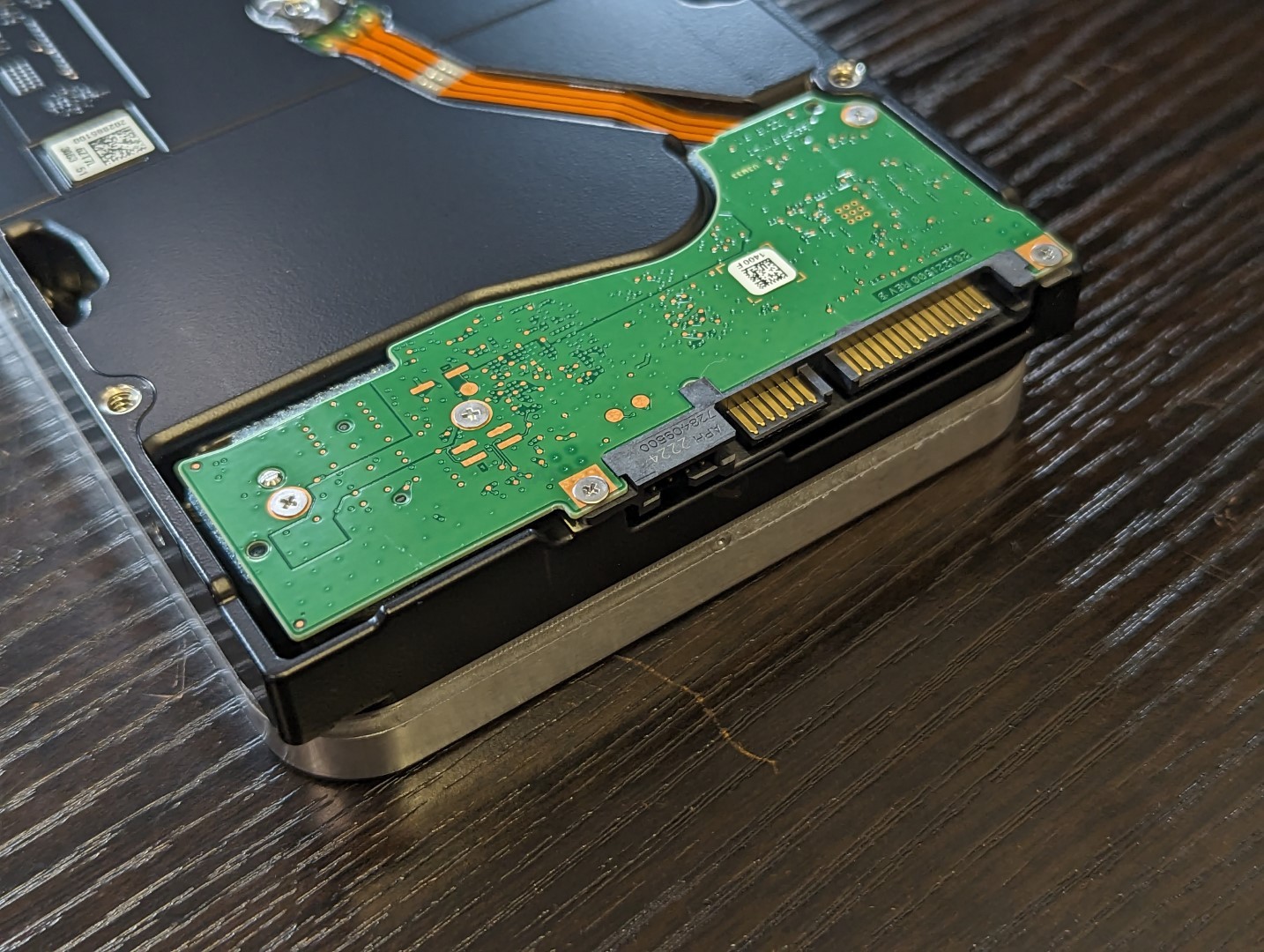
#3 – High Durability
Another point that Seagate was very keen to highlight when presenting the Seagate EXOS Mach.2 HDD range way back in 2019 at CES was that, despite the doubling of transfer speeds compared with those of single actuator Seagate EXOS drives, they still maintain the same level of durability and sustained use associated with enterprise-class drive media. All the Seagate EXOS 2X14, 2X16 and 2X18 HDDs have a 550TBW annual workload, 2.5 Million hours workload limit and 600K load/unload cycles. Obviously, thise is still la drive that has the potential to write at twice the speed of single actuator HDDs, but its still good that this standard of sustained use is maintained by comparison.
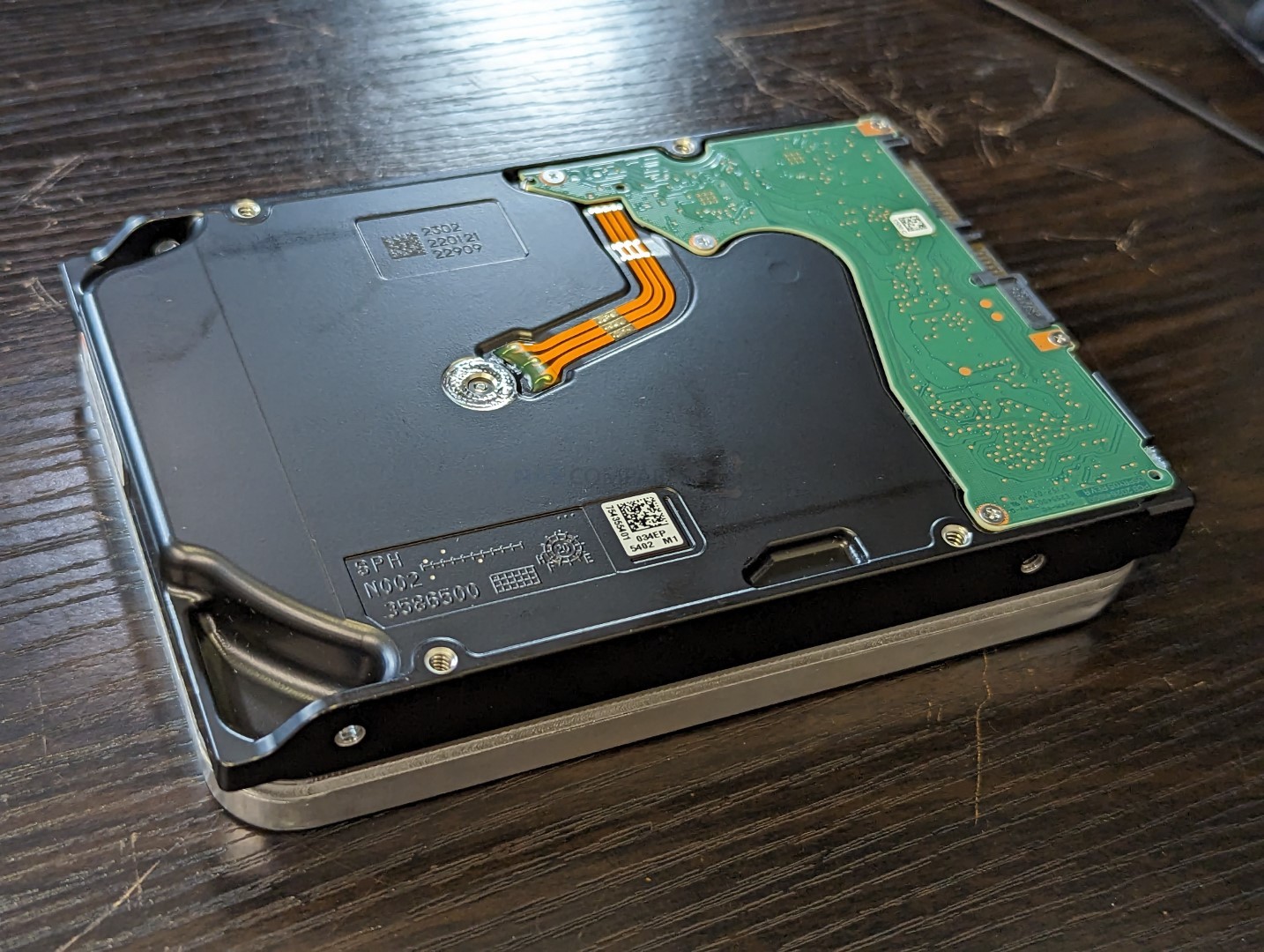
#4 – Quieter than the same capacity with a single actuator
This is a point that is going to be exceedingly easier to explain the video linked below than to try and describe, but the Seagate EXOS Mach.2 HDD series are surprisingly quieter than single actuator HDDs of the same capacity. I performed several tests using a single Seagate EXOS 2X18 HDD in a quiet NAS (so I could isolate the individual drive noise) and then compared with against a Seagate Ironwolf Pro 20TB HDD. The result was that the 20TB drive was noticeably noisier in both general access noise AND when the HDD was accessed at high volume in 4K random IOPS benchmarks. Now, you might be thinking that the reason was because of the additional 2TB of storage in 18TB vs 20TB – Nope. It was seemingly down to the dual actuator design separating the need for a more ‘highly sprung’ arm+actuator to hop between all the platters as much. The Seagate EXOS 2X16 Mach.2 HDD, for example, is technically 2 8TB HDD’s worth of platters and two actuators – so the noise level was akin to that. As many of my previous HDD tests have show, HDDs under 10TB have tended to be significantly quieter and this was indicated when the 2X18 drive was the lower noise of the two. Again, it’s tough to describe, so I recommend you SKIP AHEAD to HERE in the video to hear how the Seagate Mach.2 HDD compares with a Seagate Ironwolf Pro when installed in a NAS Drive.
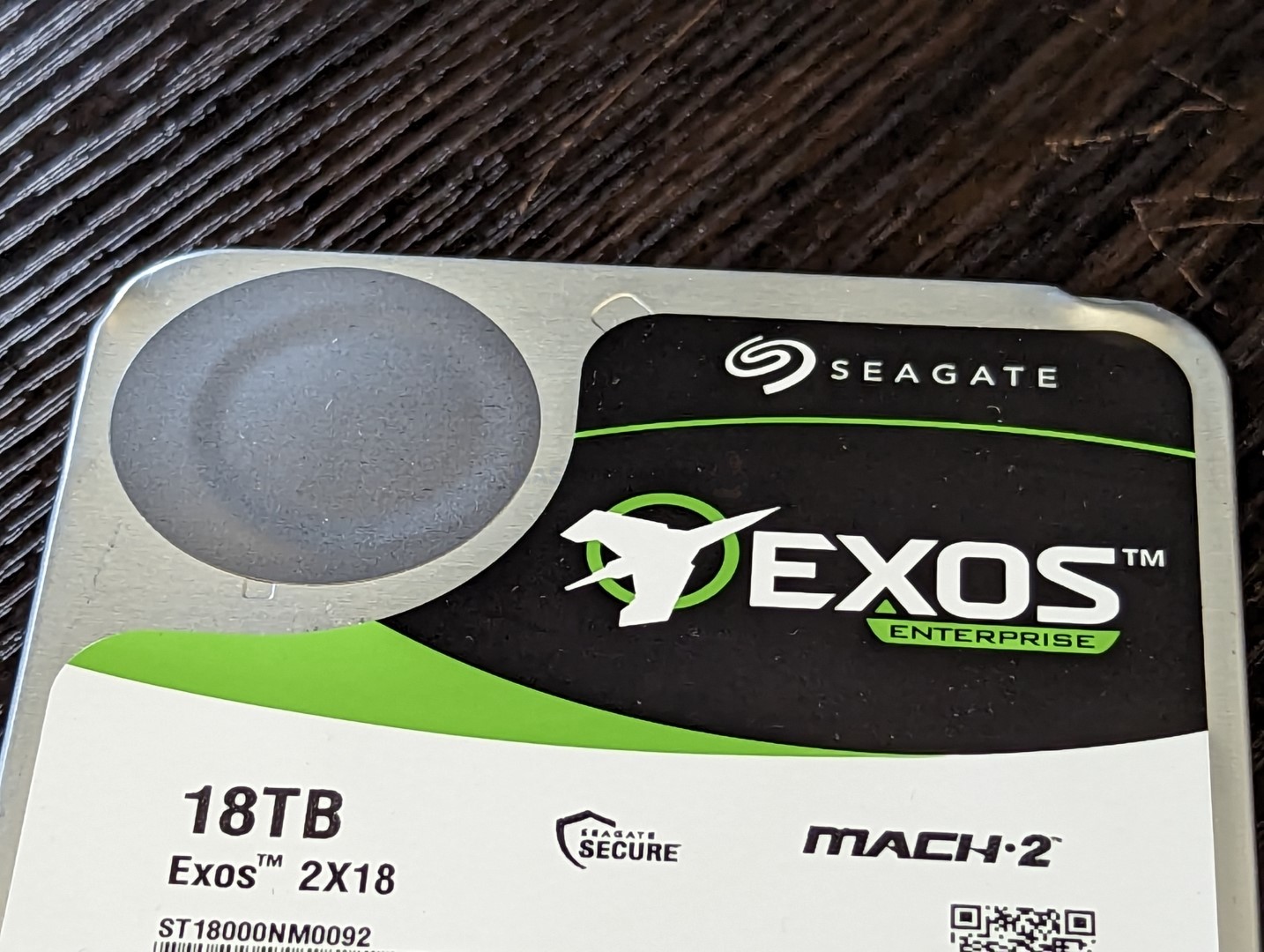
4 Reasons the Seagate EXOS Mach.2 HDD Might Not Suit Your Needs
Nothing is perfect, right? For all of the positives that I have highlighted above, the Mach.2 HDD is still not a perfect Seagate EXOS drive for your needs. Here are four reasons why you might want to give the Seagate EXOS Mach.2 server drive a miss, opt for an alternative drive like Ultrastar or go ‘Pro’ instead.
#1 – Dual LUN Architecture is not straightforward
I think this si something that Seagate could stand to be ALOT clearer about in it’s messaging about the Seagate EXOS Mach.2 HDD series, but the fact that the drive needs to be communicated/mounted with in a specific way is not as well known as it should be. Normal single actuator HDDs are connected via SAS/SATA and the drive appears as one single large area of storage for you to use. These dual actuator HDDs on the other hand are comprised of two Logical Unit Number (LUN) storage blocks (each one has it’s defined platters and actuator). You cannot just connect the Seagate EXOS Mach.2 HDD with any storage system (that includes Synology, QNAP, etc) and get those 550MB/s+ performance speeds, as they do not see the HDD in that way. In those setups, the Seagate EXOS Mach.2 HDD will hit a max 280MB/s or so, like any other larger capacity EXOS HDD. At the enterprise-class level, the dual LUN architecture can be interfaced with logically at the server level as geared to take advantages of the dual storage architecture, e.g. think RAID 0/1 in a NAS of two drives versus a single HDD that is twice the capacity – double write/read type performance is only possible in a system that understands the RAID configuration and protocol. The same applies to dual LUN drives such as the Seagate EXOS Mach.2 HDDs.
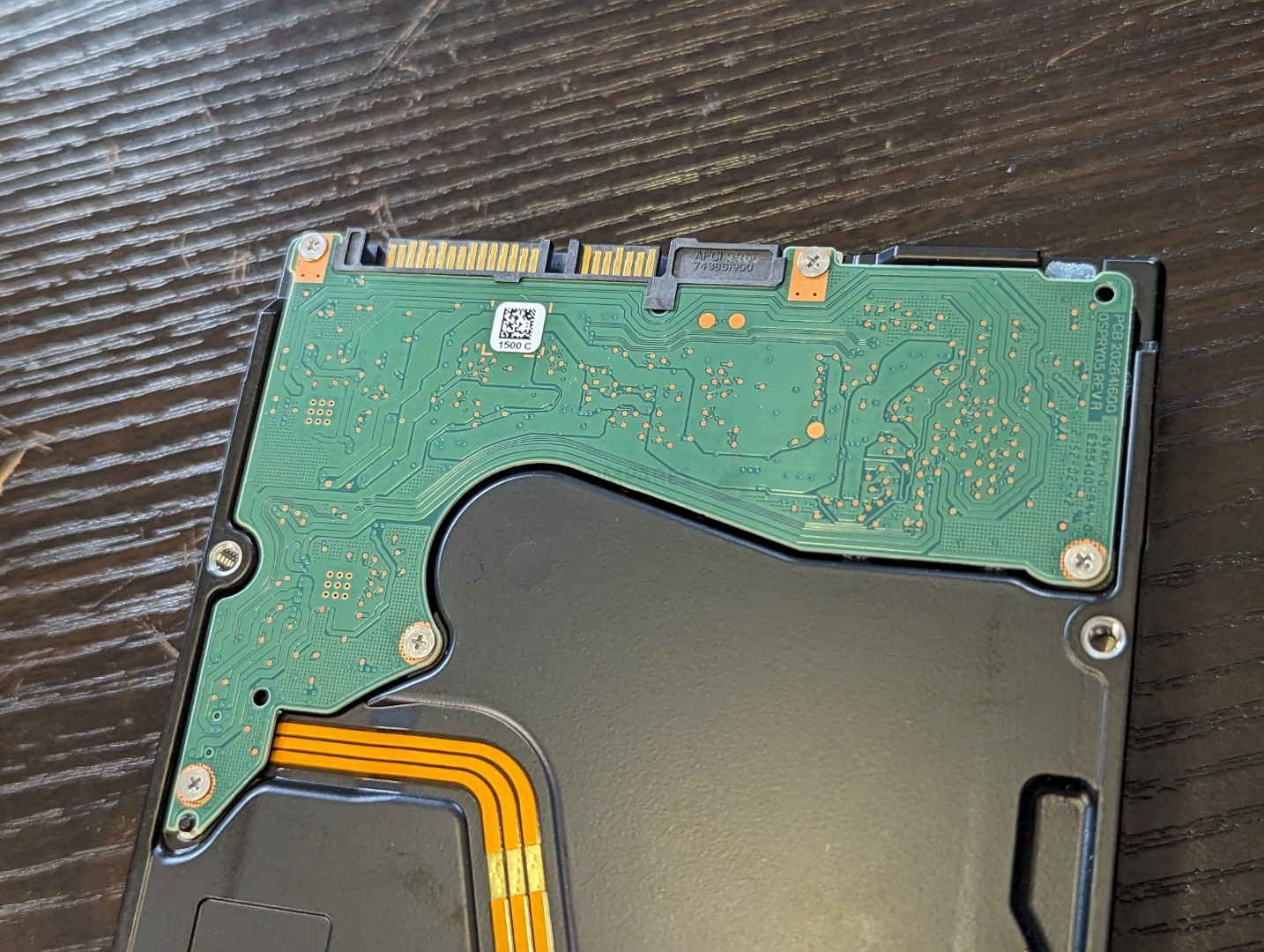
#2 – Pricing and Availability is ‘bulk’ Restricted
Despite the fact that the Seagate EXOS Mach.2 HDD series have now been available to buy for the coming close to two years, stock levels and pricing is still INCREDIBLY enterprise focused (not a huge surprise, but still). Typically they are only available for special orders, can only be purchased in bulk cartons and do not benefit from any kind of bulk discount pricing. Quite the opposite infact and are comparable to the bulk pricing and restrictions of Ultrastar temperature-sensitive drives and the 10K/15K HDDs we mentioned earlier. Again, this all makes sense in the context of an enterprise-grade product, but does make the price per TB and price for the performance gains negligible unless you are going to go serious bulk’.
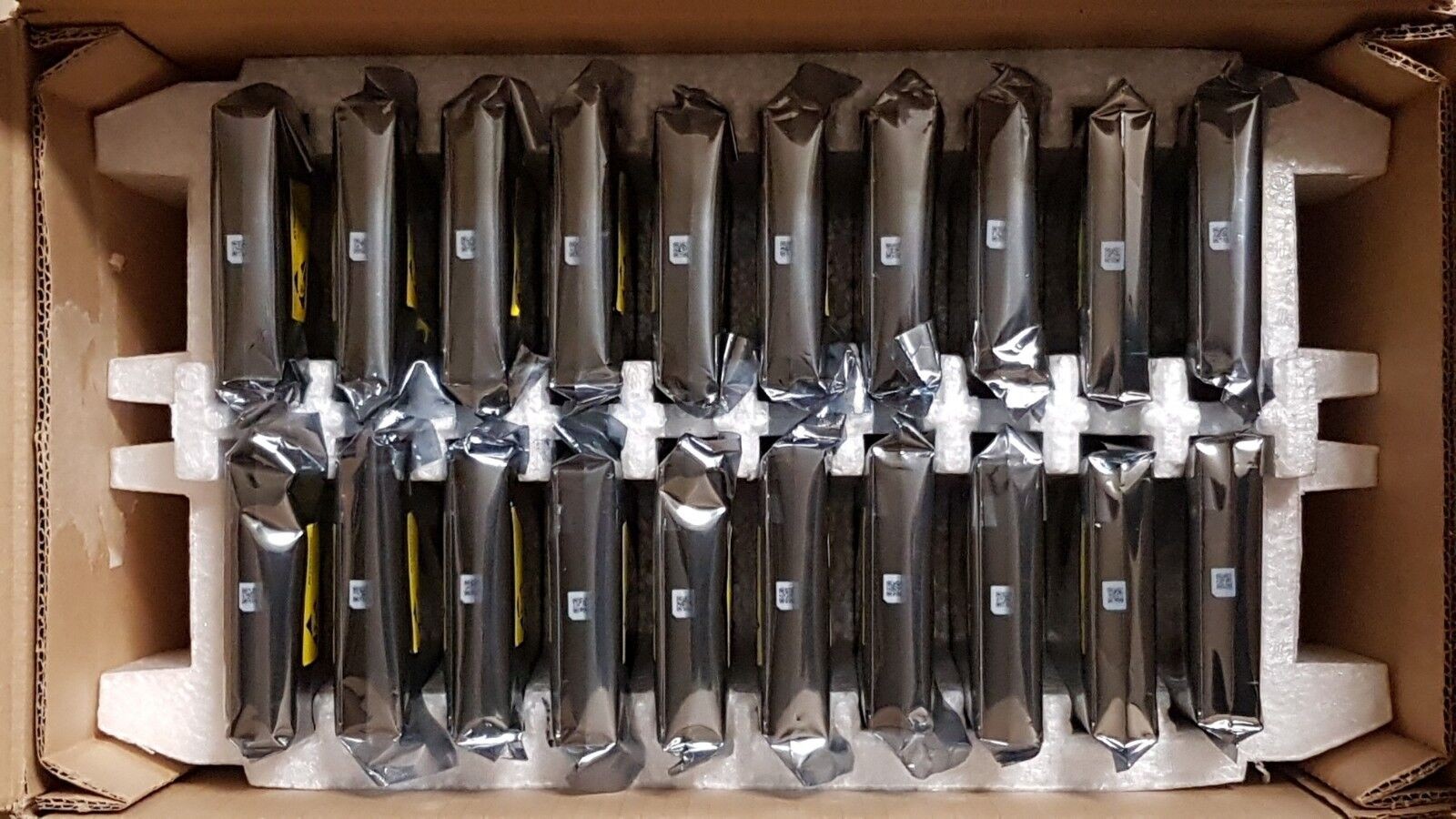
#3 – Price and Capacity could be challenged by SATA SSDs with QLC NAND
This is a barrier that is only now starting to emerge, but the growing affordability of SSDs thanks to Quad Layer Cell NAND development and its ability to 1) increase capacity possible on single PCB SSDs and 2) significantly reduce the cost per TB of SATA SSDs, is DEFINITELY something worth considering. For a start, although the general price point and capacity max of a SATA QLC NAND SSD is around $499 for 8TB, (still less than half the capacity of the Seagate EXOS 2X18 for example), they have a lower power consumption, are more widely available, lack the hassle of the dual LUN architecture needed for 2x actuator HDDs and once you start to look at the performance of QLC NVMe SSDs, they become even more viable. Now, elephant in the room, there is the question of durability with QLC NAND SSDs versus that of the Seagate EXOS Mach.2 HDDs, which makes QLC SSDs at the data center hugely unsuitable, BUT for home/SOHO users and even mid-large businesses, there might well be enough pluses in the QLC NAND SSDs at 8TB available right now to win overall (especially if their data refresh rates are domestic/low).
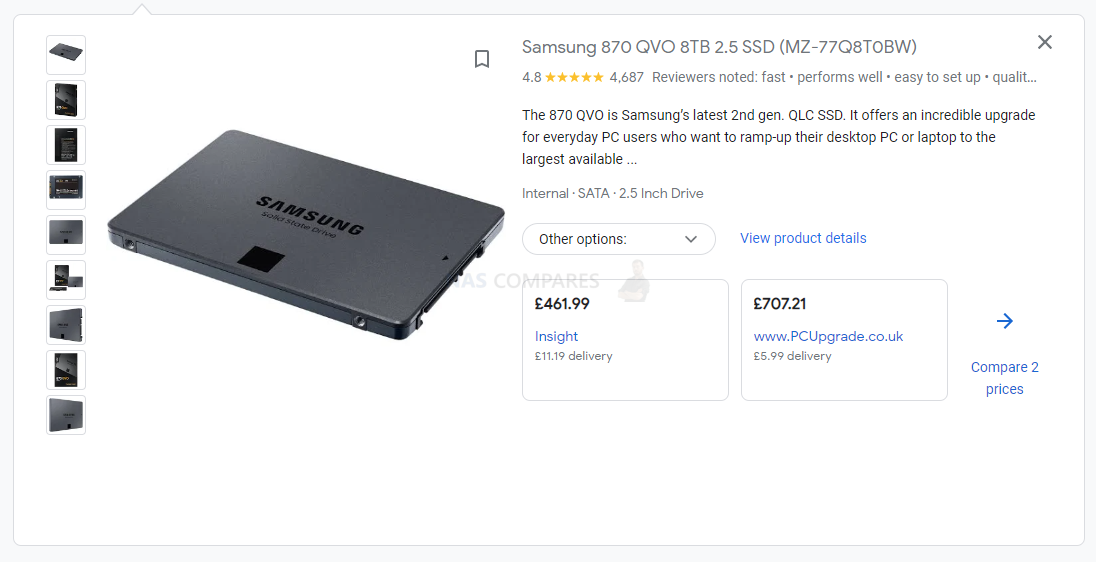
#4 – Seagate NVMe SSDs on the horizon for DC?
This is one for the future and more of a reason not to invest in Seagate EXOS Mach.2 HDDs ‘yet’! In 2021 we saw Seagate reveal a prototype HDD that they are working on that arrives with M.2 NVMe support. Now, as ridiculous as that sounds for a mechanical HDD that pumps out hundreds of MB/s to be connected via NVMe (a connection that can provide bandwidth in the thousands of MB/s), the big take away here is focusing on the future potential of this. For a start, in systems that are restricted to U.2/U.3/NVMe only, this would allow a larger capacity drive to be injected easily in conjunction with the existing faster NVMe SSDs. But, when you start considering the dual actuator HDDs in the market, as well as discussions by both Seagate and WD on triple and quadruple actuators being researched, this could easily mean that SATA and even SAS could prove itself to be a bottleneck. So, although we cannot see this arriving any time soon, I can definitely see multi-actuator HDDs like the Seagate EXOS Mach.2 HDD possibly being superseded by NVMe-connected versions down the road (in the same way we saw hybrid HDD+SSD technology be superseded by onboard flash drives like the WD OptiNAND technology to free up space by moving drive Ops to the NAND). It’s still hugely speculative, but it might be enough for you to maybe sit out eh current generation of dual actuator HDDs till ‘the next gen comes along’.
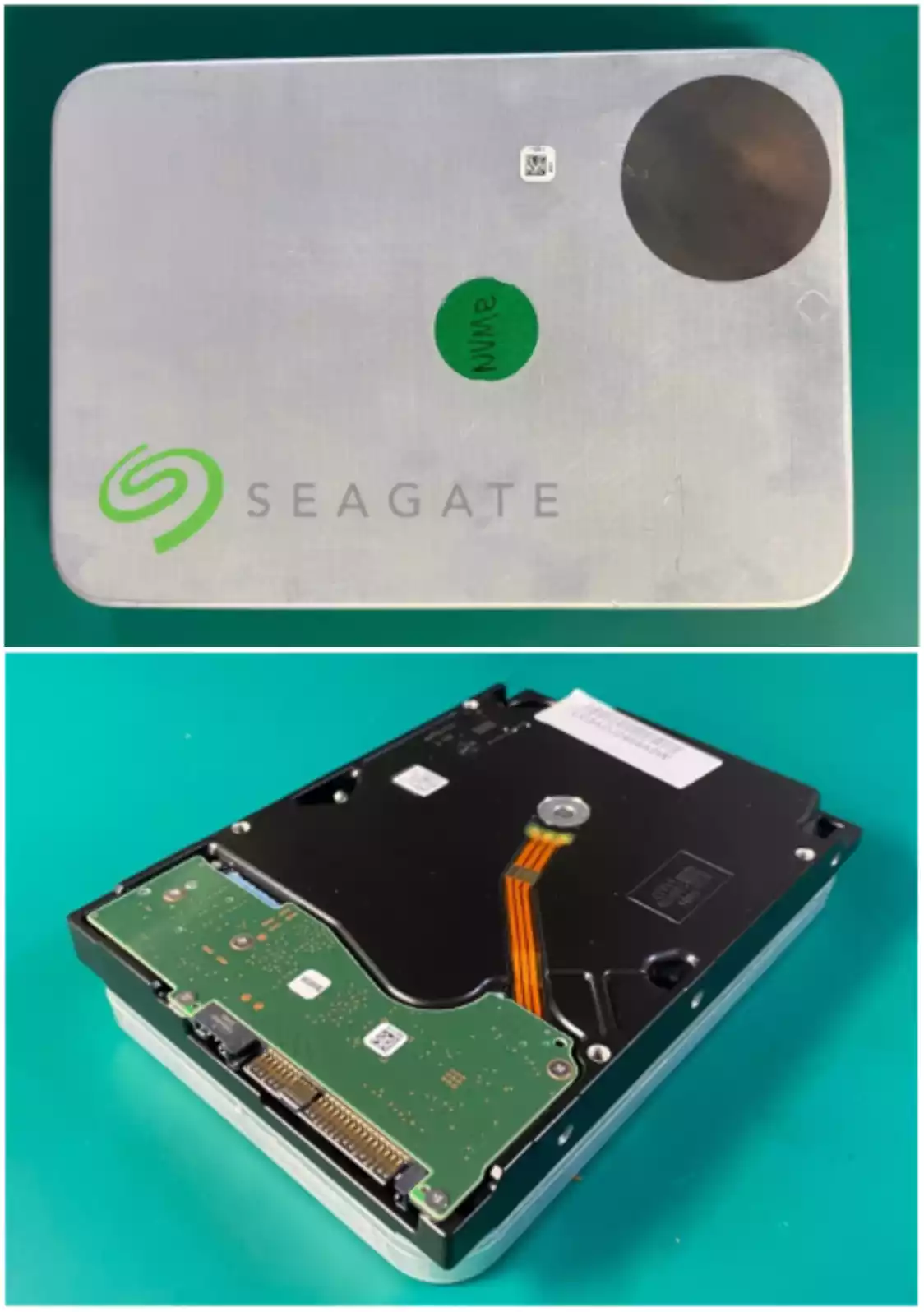
Where to Buy a Product





![]()
![]()

VISIT RETAILER ➤






![]()
![]()

VISIT RETAILER ➤






![]()
![]()

VISIT RETAILER ➤






![]()
![]()

VISIT RETAILER ➤
 DEAL WATCH – Is It On Offer Right Now? DEAL WATCH – Is It On Offer Right Now?These Offers are Checked Daily
|
Need More Help Choosing the right NAS?
Choosing the right data storage solution for your needs can be very intimidating and it’s never too late to ask for help. With options ranging from NAS to DAS, Thunderbolt to SAS and connecting everything up so you can access all your lovely data at the touch of a button can be a lot simpler than you think. If you want some tips, guidance or help with everything from compatibility to suitability of a solution for you, why not drop me a message below and I will get back to you as soon as possible with what you should go for, its suitability and the best place to get it. This service is designed without profit in mind and in order to help you with your data storage needs, so I will try to answer your questions as soon as possible.
📧 SUBSCRIBE TO OUR NEWSLETTER 🔔 This description contains links to Amazon. These links will take you to some of the products mentioned in today's content. As an Amazon Associate, I earn from qualifying purchases. Visit the NASCompares Deal Finder to find the best place to buy this device in your region, based on Service, Support and Reputation - Just Search for your NAS Drive in the Box Below
🔒 Join Inner Circle
Get an alert every time something gets added to this specific article!
Need Advice on Data Storage from an Expert?
Finally, for free advice about your setup, just leave a message in the comments below here at NASCompares.com and we will get back to you.
 Need Help?
Where possible (and where appropriate) please provide as much information about your requirements, as then I can arrange the best answer and solution to your needs. Do not worry about your e-mail address being required, it will NOT be used in a mailing list and will NOT be used in any way other than to respond to your enquiry.
Need Help?
Where possible (and where appropriate) please provide as much information about your requirements, as then I can arrange the best answer and solution to your needs. Do not worry about your e-mail address being required, it will NOT be used in a mailing list and will NOT be used in any way other than to respond to your enquiry.
TRY CHAT
Terms and Conditions


ZimaOS is the BEST Beginner NAS OS - Watch Your Back UnRAID and TrueNAS !!!
30TB Hard Drives are TOO BIG ! (and here is why)
COMPLETE UGREEN NAS Setup Guide - 2025 EVERYTHING VERSION
$110 USB4 to 2x10Gb Adapter Review - What the WHAT?
UGREEN NAS Now has iSCSI, 2FA and Jellyfin (and more) - FINALLY!
Seagate 30TB Ironwolf and EXOS Hard Drive Review
Access content via Patreon or KO-FI


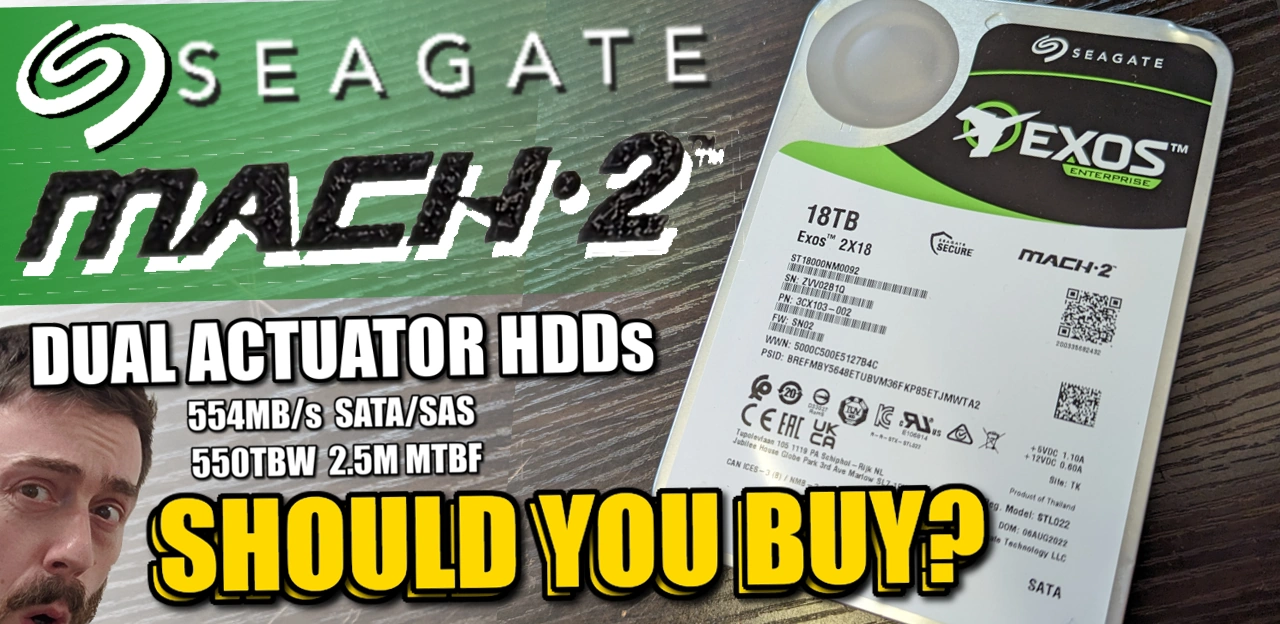




I don’t like this because if one of those controllers for the arms falls all of your data is gone from my understanding each of them gets it’s own controller so this one there’s 2 for each of the arms and in the future you’re taking about quad arm ones so there’ll be 4 controllers for them etc and like in a raid one dies your data is gone
REPLY ON YOUTUBE
Thinking about purchasing 2 Seagate Mach.2 SATA drives for Windows PC backup. With each drive, I’ll be partitioning each in half so that they’ll both simultaneously read/write with both of their respective partitions and therefore taking advantage of the dual actuators. Both physical drives will be identical copies of eachother but without RAID 1 as I like to do it manually so that both drives are not “connected” in any way. I have 2 questions though:
– Do you know if there are any un-advertised / un-marketed improvements with the 2nd gen Mach.2 drives (2×16 and 2×18) compared to the 1st gen Mach.2 (2×14)? Maybe little changes for better reliability, more consistent speeds across all sorts of different scenarios, etc.?
– How much difference is there with the Random Read/Write 4K QD16 (IOPS)
of the 2nd gen (340/560) VS the 1st gen (340/384)? I have trouble perceiving IOPS numbers into real-world scenarios – not to mention the inconsistency of storage drive speeds when writing thousands of files with all sorts of different file sizes. Is the 2nd gen’s write IOPS of 560 an indication of a solid real-world performance improvement over the 384 IOPS of the 1st gen or is that more just “on-paper” stuff that will have little-to-no real world impact?
This is for backup of my Windows PC files. All sorts of games, programs, videos, pictures, etc.. So we’re dealing with thousands and thousands of randomly sized files. I can’t decide if I should buy some refurbished/recertified 2×14 models now, or wait until I can find some refurbished/recertified 2×18 models (the extra 4 GB is irrelevant to me, it’s the other stuff I’m wondering about).
REPLY ON YOUTUBE
Just filled my Unas Pro with Exos 14tb Mach 2’s
Working fine
Also now working with Qnap Nas
REPLY ON YOUTUBE
Would these work as dual LUN in a UniFi UNAS Pro?
REPLY ON YOUTUBE
I don’t care about the speeds, I picked up two refurbished models for some RAID 1 data drives for my PC purely for the noise reduction. These things are so much more quiet than any drive you can find at comparable sizes and speeds.
REPLY ON YOUTUBE
Thank you for the noise test.
REPLY ON YOUTUBE
I’ve no seen a single one for sale yet..
REPLY ON YOUTUBE
With all those requirements, make me wonder if these would ork in the Synology DS3623xs+.
REPLY ON YOUTUBE
I bought this HDD and it’s really quiet
REPLY ON YOUTUBE
Just got my hands on some Exos 2×14 Mach.2. Boy, in terms of noise level, these Exos are leagues quieter than the WD UltraStars DC H550.
REPLY ON YOUTUBE
If I get one of those for my regular PC windows 11 … Do i need to install an additional software ?? …
REPLY ON YOUTUBE
Yeah NVME HDD sounds expensive. For most folks, either regular NAS drives and if speed is required an SSD NVME solution.
REPLY ON YOUTUBE
I’m interested but I can’t even find a single place that sells these except sketchy eBay listings……
REPLY ON YOUTUBE
I put one of these in a TerraMaster TD2 for backup purposes. I knew the SATA drive would be seen normally in its full capacity – plug and play. The SAS version appears as two drives to the system (18 TB would appear os two 9TB drives). I was surprised to find only 260MB/S peak read speeds until I saw this “review.” Is there driver software I can run to gain full speed access to this drive in Windows 11? I am happy with it since 8TB is too small for my backups and the pricing I have found for factory refurbished samples of this drive are cheap. AND its STILL the fastest HDD I own. I’m doing a backup right now and all I hear is the soft woosh of the fan installed in the TerraMaster. If I were listening to a video of having a conversation, I wouldn’t hear the drive AT ALL. I rarely hear a soft click from the drive. CrystalDiskInfo also shows the drive running at a cool 44 degrees C even after of hours of backing up. This was a helpful video. Thanks.
REPLY ON YOUTUBE
Will these drives work as intended in a Synology 5 bay system?
REPLY ON YOUTUBE
Look like WD is also doing this , can’t wait .
REPLY ON YOUTUBE
I have no idea where to buy this, even on seagates website I dont see it being offered.
REPLY ON YOUTUBE
Check out Server Supply. That’s where I just got mine last week.
4 months later: any benchmark updates?
REPLY ON YOUTUBE
I’m excited for faster HDD, especially looking forward to faster random read speed.
REPLY ON YOUTUBE
You are really off unless you are talking about the average speed over time when doing a complete read/write of the entire HDD. HDD speeds keep going up the larger the drive is due to density of data on each ring/spin. My 6TB 7200rpm HDDs had a peak speed of ~270MBps and IIRC an inner speed of 90MBps (might have been 60MBps). My 12TB 7200RPM HDDs had ~320MBps IIRC. The inner speed I don’t recall. If the 6TB has a 60Mbps then I think the 12TB has 90MBps but its been so many years since I benchmarked them. I do know the outer speeds are correct.
REPLY ON YOUTUBE
What I don’t understand is with an EXOS MACH.2 2x18TB hard drive are you forced to have 2 logical 9TB hard drives? Does that mean in Windows you are forced to do a RAID0/jumbo for 1 18TB drive or does the HDD hardware/firmware handle this internally allowing it to show up as a single 18TB hard drive to the OS (Windows in my case)?
Or does the HDD hardware/firmware allow all of the above? I have not found any explanation online that completely answers this. I have just found partial explanations that do not fully answer this and leaves open questions.
I would love to know and appreciate the help! I plan on using this when I have the time to fix/rebuild my SnapRAID server. It currently is SOL because I ran into hardware issues and haven’t been able to fix it for a few years due to funds/health stuff. This year, I plan on building an entirely new server with using either Mach.2 as my parity drives or Mach.2 as data drives and SSDs as parity. Getting rid of the 1-2 day sync/scrub/rebuild times will be amazing!
I think and wish the industry would completely drop the standard 3.5 inch hard drive size and go back to the 2 independent actuators from decades ago. Then, they could add this technology to the 2 independent actuators allowing us to have 4 actuators giving us possibly up to or more than 1GBps read speeds! Thus, we could actually max out 12Gbps SAS connector. Allowing us to actually completely read future 50TB hard drives in half of a day instead of 1-2+ days.
At an average of 250MBps a 50TB hard drives would take just over 2 days to completely read! With Mach.2, it still will take over an entire day to completely read! If we went back to 2 independent actuators and added this technology we could reach 1GBps speeds and completely read future 50TB HDDs in about 12 hours! This would also double or quadruple the TB/year limit of hard drives* due to having 2 full read heads/actuators.
I could easily see the industry being willing to accept a whole new hard drive form factor for the ability to have full SAS 12Gbps speeds and double or more the life span of HDDs. I myself would gladly buy a new 4U case to have that. Replacing my case would be a small price and would pay for itself for my HDDs to last twice as long or more and doubling or quadrupling their speed!
*I don’t fully understand this so please correct me if I am wrong. From my understanding, hard drives were originally considered to have drastically more read/write capacity than SSDs. For some reason, sometime over the last 5-10 years HDDs started to have a TB/year limit. From my research this limit is to the read head not the HDD discs. I would love to better understand this and what changed.
Any clear and accurate explanation and comment on this specific part is welcomed as well.
REPLY ON YOUTUBE
9 platters = 18 heads = 9 heads per actuator and sharing one middle platter
REPLY ON YOUTUBE
This may help. In seagate’s faq they suggest partitioning the sata disk into 2 and then use soft raid 0 to get performance. Or if your load is big enough, it’ll naturally help. They even have a fio script. I don’t see the partitioning working except for testing unless you use something like lvm.
From seagate manual. It’s split by lba not lun and reads the consecutive sector log.
Exos 2X18 is a device that contains two actuators which can read and write concurrently. The first 50% of the device’s LBA space is mapped to the primary actuator and the second 50% of the LBA space is mapped to the secondary actuator. Exos 2X18 supports the Concurrent Positioning Ranges log page 47h which indicates the sets of contiguous LBAs within each actuator for which positioning is possible at the same time. See ACS-5, Rev. 6 or beyond for details.
REPLY ON YOUTUBE
Now I have a conundrum. Same price for a x18 or a refurb 2×18 on newegg. I’m leaning towards the refurb. It will be raid 1 btrfs.
REPLY ON YOUTUBE
No review video out until now?
REPLY ON YOUTUBE
None of the links I tried to find them went to an actual product, so I’m guessing they’re not “on shelves” yet.
REPLY ON YOUTUBE
Probably these disks will not work on the vast majority of mainboards. Have not seen mach.2 hdds in any mainboard compat list yet…
REPLY ON YOUTUBE
I am thinking of building a small RAID of an array for video editing. Level 1 is possible, but what will happen if one part of the disk fails. In any case, I would wait for a product for raid 5 on one drive LOL
REPLY ON YOUTUBE
Fascinating….! Another awesome video from you, man. Now, the faces that you make when listening to both drives.., are priceless..!!! ???????????? ROFL.
REPLY ON YOUTUBE
Need independent actuator for each plate.
REPLY ON YOUTUBE
Why don’t you get a 1st gen Mach.2 drive? Since I haven’t seen any number for the 2nd gen drives outside of the spec sheet I’m thinking the 2nd gen in only about ~100MB/s.. I still like the full deplex of SAS over SATA even if you limit the 12GB/s drives to 6Gb/s. SSDs still are not as reliable as HDDs YET. The Nvme connector on HDDs is just an attempt to unify the connector for the tri-mode controllers, which should make everything cheaper in the long run. Even though you couldn’t get us the numbers I subbed to you anyways. Seagate won’t stop you from pulling number from a 1st gen drive. It would be nice to know which HBA and RAID controllers from Microchip, Broadcom, and Areca actually work well with these seagate drives. Have considered a video on that yet?
REPLY ON YOUTUBE
dose anyone know where one may buy these hdd’s please?
REPLY ON YOUTUBE
The drive speed sounds great but I wonder what the sustained speed is.
REPLY ON YOUTUBE
so depressing. as i was looking forward to these. oh well guess il stick with exos standard drives. could you make a video that showcases the difference between the new ironworf pros with 550 tb workload a year and exos they seem really similar.?
REPLY ON YOUTUBE
that really doesent seem cost effective, since ssds are so much faster and most enterprizes and the average gamer with access to primocache use ssds as thier cache, to speed up data, or just the disks in raid. regular exos drives are much much cheaper, and iron wolf… so i think 650-750 is too much for similar technology seagate may be shooting themselves in the foot no buisness except very high end would consider it, and onley because thier more durable then ssds, otherwise might as well go with standard high end cmr hdds. i think its likely the dual actuator tech and hammer that is pushing costs so high. but they wont sell unless the costs come down and ease of use goes up, id like to see them make a consumer level hdd that fast, that can play games. but were not there yet.
REPLY ON YOUTUBE
i am really looking forward to these drives man i love your videos hdds are definetly still innovating do you think they will ever release these to the regular public? if so i would use my old exos drives for backup and exos mach2 for more active data.
REPLY ON YOUTUBE
i am really looking forward to these drives man i love your videos hdds are definetly still innovating do you think they will ever release these to the regular public? if so i would use my old exos drives for backup and exos mach2 for more active data.
REPLY ON YOUTUBE
I’m sure these cost a pretty penny for the next while, but holy crap these are the future! Near SATA SSD levels of performance with crazy hard drive capacity and quieter than a lot of other large drives, these look amazing! Even if the benchmarks come back lower than advertised, and it’s only 350-450 MB/s or so, that’s still crazy performance for a mechanical drive that will definitely be noticeable and closer to an SSD than most other HDDs.
REPLY ON YOUTUBE
@03:33 “This manages to do it in optical fashion”
Is it not magnetic drive media or am i missing something?
REPLY ON YOUTUBE
@03:33 “This manages to do it in optical fashion”
Is it not magnetic drive media or am i missing something?
REPLY ON YOUTUBE
Would love to see a video on what you think about shucking Hard Drives for saving on a NAS setup – Pros and cons, good and bad, all that stuff
REPLY ON YOUTUBE
These things only have a single SAS port, so you need to buy double the number to maintain redundancy. SATA versions only expose 1 LUN, with the LBAs split high and low. It would have been interesting if the heads read each others’ tracks; that cuts access time in half
REPLY ON YOUTUBE
Hi, love your work.
Does it work on DS423+ or older models? Seagate EXOS MACH.2 2×18 HDD VS Seagate IronWolf 8TB 7200RPM 256MB SATA III, what to buy?
Waiting for the next video about the performance.
Best regards.
REPLY ON YOUTUBE
Just make sure you are not getting SMR. While they are not useless you don’t want them for any drive that will be written to a lot. This can make copying files seem like it takes forever!
REPLY ON YOUTUBE
The only disadvantage with SAS is that no motherboards I ever had have it. I know of no consumer motherboards that have it or if they did they would be expensive by comparison to one that didn’t and had just SATA. One nice thing about SAS is SATA drives work with it. That is just not the other way around. I also have never seen a lot of USB enclosures for SAS and that may be because you won’t take advantage of its speed. There is at least one somewhere on the internet but they are not common like SATA enclosures. Maybe they would have them more for Thunderbolt since it would utilize the bandwidth.
REPLY ON YOUTUBE
I don’t rust Seagate. All the harddisk failure that I have experienced in my life, was caused by seagate.
REPLY ON YOUTUBE
I wish I knew about this.
REPLY ON YOUTUBE
That’s amazing the noise level compared to the Iron Wolf. I have a IR pro 18tb and when it’s working it is loud but I like the sound of it .
REPLY ON YOUTUBE
i looked in to getting 1 last year you just can get one at that time
REPLY ON YOUTUBE
You have been researching these devices for years, both HDDs and NASs, why don’t you put their data into a framework, such as performance, speed, noise, warranty, or where you recommend it? Make the comparisons on graphs and show the differences in value. The waving hand is a bit boring.
REPLY ON YOUTUBE
How much Heat does it kick out
REPLY ON YOUTUBE
PS: when you state the Reason number X on screen, could you show it for just a little bit more time please?
I believe you now show it for 4 seconds, 6 seconds would be better to be able to read it (for non-native English speakers)
Back on topic; nice technology, too bad they will not allow you to do your infamous magic on it, yet.
I don’t know the price (I expect quite expensive per TB) but with the prices of “regular” (SATA) HD’s and (M.2) cache, would that not be a decent, more affordable solution? Next to more proven technology at this moment. (I know Seagate has been working on this since 2020)
I also expect this HD to run more quite hot plus more power consumption. So perhaps also needs a beefer powersupply in a typical NAS?
More noise is often due to more movements (and more vibrations) but to my ear it was only a couple of DB’s less nosier. so not really earthmoving to me.
The requirement for special LUN management can be a disadvantage as that limits the full potential of this drive to systems (NAS included) who do not support that.
So a “happy few” situation, if not careful.
I for one do find it exciting new technology but will be only happy when it becomes mainstream, universal and available to all.
And to be honest, expecting the prices, I do not see that happening in the short future.
BTW, I am a wee bit surprised it has a rather low amount of cache (256MB) for that kind of speedy drive?
Computer science 1-0-1 teached me that higher speeds usually also means increasing caching to cope with any “speed-bumps” (pun intended) of the lesser-fast host?
Via G00gle you can find already some benchmarks and the remarks about their findings.
Very nice technology, excellent for datacenters, good-money paying customers etc.
PS: they are sold per a carton of 100x 😉
REPLY ON YOUTUBE
An obvious question here… Does Synology or qnap have the ability to see/use the two LUNs at full performance?
REPLY ON YOUTUBE
One big reason not to buy: Seagate. Seagull. Do you think that’s a coincidence? 😉
REPLY ON YOUTUBE
I am happy with my new WD Gold 20TB HDD with NAND built-in !!! It is actually crazy fast when you just moving files within 4GB !! When you move over 4GB, it will slow down to 285MB/s which is still the fastest HDD you can buy now !! worth the money !! I only trust WD HDD !! It never fail !! I had a very bad experience on Seagate. so I never buy any Seagate new drive anymore !!
REPLY ON YOUTUBE
Power consumption and longevity/reliabiility are the two things I’m watching for on this one 🙂
And I guess for benchmarks I would want to see it compared against 2 separate sata hard drives in an array
REPLY ON YOUTUBE
Aw, damn, I saw “2x18TB” in the title and thought Seagate had somehow managed to fit 36TB in a single drive
REPLY ON YOUTUBE
That is soooooo expensive. Very few real people will be buying these new. Perhaps used in a couple of years but today…. not a chance.
REPLY ON YOUTUBE
Strange thing about “dual LUN”. So they just offer to maintain “raid 0” on these two LUNs outside of a drive or what? Or if you are unable to properly communicate with the drive, it will act like JBOD, so there really will be no advantage on speed?
REPLY ON YOUTUBE
Populating my new qnap nas with 8 – 20TB exos drives. Best value for me as I am not only looking for performance but also for space.
REPLY ON YOUTUBE
I’ve seen enough, It’s the one for me but 1 drive costs more than a 923+ at this time. I will still be on the look out for a few. Overtime I will get 4 or 5 depending on the Synology NAS I chose. Thanks once again. Looks like I’ll be budgeting $2.5K for my ultimate NAS upgrade.
REPLY ON YOUTUBE
No seagals today?
REPLY ON YOUTUBE
i think this is great im excited too especially for gaming, i know not everything works as well on hdd, but bieng able to horde games and use primocache with ssd as cache works extremely well, ive outgrown my ssds, and dont want qlc no thank you, so ill do tlc, ssds as a cache with massive hdds, and for backups, hopefully ill be able to replace my older firecudas with mach 2s or wds dual actuators, thatd be fun. always apretiate your videos man, the hdd is not dead, its still great tech, particularily if you have tons of data you want to use.
REPLY ON YOUTUBE
My guts tell me it’s gonna have high fail rate.
REPLY ON YOUTUBE
Pringles party !! ..woooot !!
REPLY ON YOUTUBE
I still want my fabled 12cm ‘1petabyte single optical disc’.. I’ll even take an 8cm ‘500 TB single optical disc’ … or perhaps go back to the caddied Mini-Disc with a ‘250 TB single optical disc’ capacity, even if it’s only a write once, multi-session finalizing function? 😛
REPLY ON YOUTUBE
Capacity wise SSDs has long suppressed spinning rusts. It is the low cost of harddisks that is making its last stand.
REPLY ON YOUTUBE
Been waiting for this for a long time. Since 2003 or 2004. I was also wanting SSD’s at that time.
REPLY ON YOUTUBE
Internal RAID 0 ?
REPLY ON YOUTUBE
Pringle crumbs might cause a head crash.
REPLY ON YOUTUBE
In your futur comparaison of the tech with seagate vs wd. Why wont you include Toshiba?
REPLY ON YOUTUBE
Love the opening!
REPLY ON YOUTUBE
More moving parts to go wrong????
REPLY ON YOUTUBE
Great demo on the single vs double with chips!
REPLY ON YOUTUBE
It is important to notice that even if a Dual Actuator drive has sequential speeds of 500+MB/s the random speeds are are going to be far slower than a SATA SSD.
REPLY ON YOUTUBE
I have a question, why don’t we see hard drive with usb connection instead of sata 600 on hdd ??..internal drives ..
REPLY ON YOUTUBE
Sometime back around 1988 I was taking a course in database administration. Our small class had a field trip to the local IBM office where some engineers explained how HDDs work. I said there seemed to be plenty of room inside the demo HDD for another actuator with another set of heads. Why not use it? They were incredulous. Why would I even suggest such a thing? Their HDDs will always write/read much faster than the rest of the data stream could support!
This is the kind of ‘forward thinking’ that got IBM to where it is today.
REPLY ON YOUTUBE
lol, love the introduction…
REPLY ON YOUTUBE
I came for the rigie / servo.
REPLY ON YOUTUBE
Very excited for this tech. Curious if we will ever see more actuators as this technology matures (quad??)
REPLY ON YOUTUBE
Thank yo for posting this!
REPLY ON YOUTUBE
Dual actuator explanation using Pringles is EPIC!
REPLY ON YOUTUBE